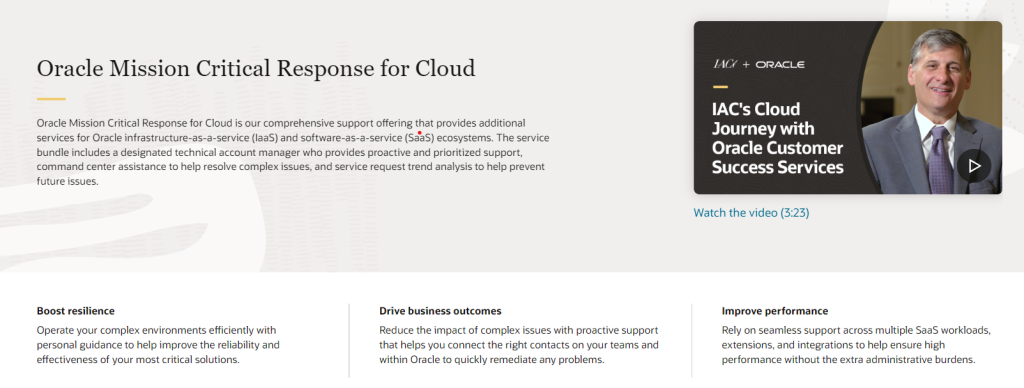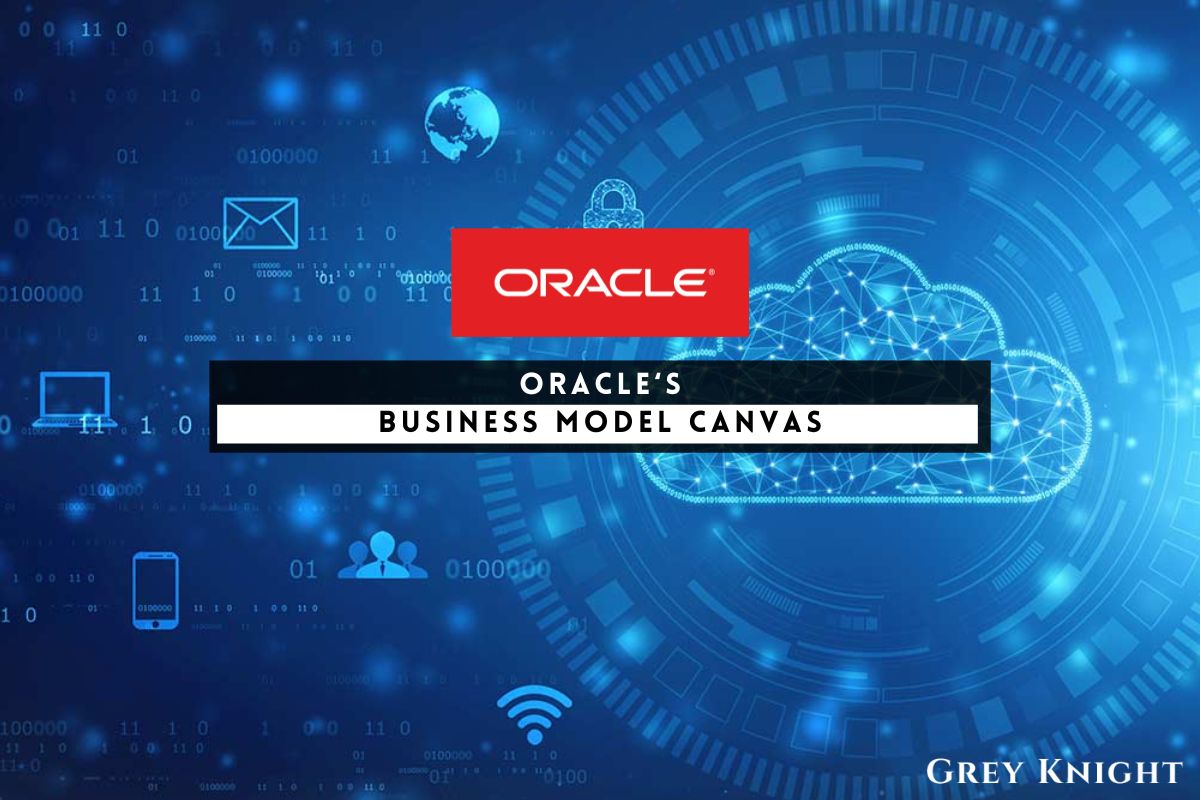Table of Contents
ToggleA Brief History of Oracle Corporation
Oracle Corporation was founded in 1977 by Larry Ellison, Bob Miner, and Ed Oates in Redwood Shores, California. The company originally began as a consulting firm named Software Development Laboratories (SDL), which primarily focused on providing consulting services for the database management system Oracle.
In 1979, SDL changed its name to Relational Software, Inc., and then again in 1983 to Oracle Corporation, based on its flagship product, the Oracle database. The company’s primary goal was to develop and market the Oracle database, which quickly became a leading platform for database management.
Throughout the 1980s, Oracle Corporation experienced rapid growth and success, fueled by the demand for their innovative database management systems. The company expanded its product offerings to include various enterprise software solutions such as financial and human resources management software.
In the 1990s, Oracle shifted its focus towards developing business applications and client-server architecture, which further solidified its position as a leading enterprise software provider. The company also made several strategic acquisitions during this time, including PeopleSoft, Siebel Systems, and Hyperion Solutions, to expand its product portfolio.
Over the years, Oracle Corporation has continued to grow and evolve, becoming a major player in the cloud computing and software as a service (SaaS) markets. The company has also expanded its footprint in the hardware industry through the acquisition of Sun Microsystems in 2010.
Today, Oracle Corporation is a global technology leader, providing a wide range of enterprise software and cloud solutions for businesses of all sizes. With a strong focus on innovation and technological advancement, the company continues to be a major player in the tech industry.
Who Owns Oracle?
Oracle Corporation is owned by its shareholders, who hold ownership stakes in the company through their investments in its stock. The top 10 shareholders of Oracle Corporation as of 2021 are Capital Research & Management Co., The Vanguard Group, BlackRock Fund Advisors, State Street Global Advisors, Capital Research & Management Co. (Global Investors), SSgA Funds Management, Inc., BlackRock Advisors, PRIMECAP Management Co., Geode Capital Management, and Fidelity Management & Research Co. These shareholders collectively own a significant portion of Oracle Corporation and have a vested interest in the success and growth of the company.
Oracle Mission Statement

The mission of Oracle Corporation is to provide innovative technology solutions that empower organizations to simplify business processes, streamline operations, and drive growth. The company is committed to delivering secure and reliable cloud-based platforms, software, and hardware that enable businesses to harness the power of data and analytics to make informed strategic decisions and achieve their goals. Oracle strives to continuously innovate and evolve its products and services to meet the changing needs of its customers in a rapidly advancing digital landscape.
How Oracle Makes Money?
Oracle Corporation’s business model is primarily based on selling software and technology services to businesses. The company makes money through licensing fees for its software, as well as through subscription fees for its cloud-based services. Oracle also generates revenue from consulting and support services related to its products, as well as from the sale of hardware systems. Additionally, the company earns money from the sale of enterprise software applications and database management systems. Oracle’s diverse revenue streams contribute to its position as a leading technology company in the global market.
Oracle’s Business Model Canvas
The Business Model Canvas is a strategic management tool that allows organizations to easily understand and visualize the key components of their business. It provides a detailed overview of a company’s operations, allowing for a deeper understanding of how the company creates, delivers, and captures value.
Customer Segments:
– Enterprise customers: Oracle targets large organizations and corporations as its primary customer base.
– Small and medium-sized businesses: Oracle also provides software and services to smaller companies.
– Public sector: Government agencies and institutions are also a key customer segment for Oracle.
Value Propositions:
– High-performance infrastructure: Oracle offers high-performance hardware and software solutions to meet the demands of its enterprise customers.
– Scalable cloud services: Oracle provides scalable cloud computing solutions to help customers manage and analyze large data sets.
– Integrated business applications: Oracle’s suite of integrated business applications helps improve operational efficiency and decision-making for its customers.
Channels:
– Direct sales team: Oracle has a dedicated sales team that directly engages with enterprise customers and promotes its products and services.
– Channel partners: Oracle works with a network of channel partners to distribute its products and reach a wider customer base.
– Online platforms: Oracle also sells its products and services through its website and online marketplace platforms.
Customer Relationships:
– Personalized support: Oracle provides personalized support and services to its enterprise customers to meet their specific business needs.
– Training and education: Oracle offers training and education programs to help its customers maximize the value of its products and services.
– Community forums: Oracle facilitates customer engagement and support through online community forums and knowledge-sharing platforms.
Revenue Streams:
– Software licenses: Oracle generates revenue from the sale of software licenses for its database, applications, and other products.
– Cloud services: Oracle offers various cloud-based services and earns revenue through subscription fees.
– Services and support: Oracle provides consulting, implementation, and support services to its customers for an additional revenue stream.
Key Resources:
– Technology infrastructure: Oracle relies on its robust technology infrastructure to deliver high-performance hardware and software solutions.
– Intellectual property: Oracle’s proprietary technology and software applications are valuable resources that drive its competitive advantage.
– Skilled workforce: Oracle invests in recruiting and retaining a talented workforce with expertise in software development, sales, and customer support.
Key Activities:
– Research and development: Oracle invests heavily in research and development to innovate and enhance its product offerings.
– Sales and marketing: Oracle engages in aggressive sales and marketing activities to reach and attract new customers and retain existing ones.
– Customer support: Oracle provides comprehensive customer support services to ensure customer satisfaction and loyalty.
Key Partners:
– Technology partners: Oracle collaborates with technology partners to integrate its products and services with third-party solutions and platforms.
– Channel partners: Oracle works with a network of channel partners to distribute and sell its products to a wider customer base.
– System integrators: Oracle partners with system integrators to provide implementation and consulting services to its customers.
Cost Structure:
– Research and development: Oracle incurs significant costs in research and development to drive product innovation and maintain its competitive edge.
– Sales and marketing: Oracle invests in sales and marketing efforts to promote its products and reach new customers.
– Support and services: Oracle allocates resources to provide comprehensive support and services to its customers.
Oracle’s Competitors
Oracle Corporation faces strong competition in the technology industry, particularly in the areas of database management systems, enterprise software, and cloud services. Some of its top competitors include Microsoft Corporation, SAP SE, IBM Corporation, Salesforce.com, Inc., and Amazon Web Services, Inc. These companies offer similar products and services, and are constantly innovating to stay ahead in the market. The competition in this industry is fierce, and Oracle must continue to invest in research and development to maintain its competitive edge.
Oracle SWOT Analysis
Strengths:
1. Strong brand recognition and reputation in the industry.
2. Wide range of products and services, including enterprise software, cloud solutions, and hardware.
3. Global presence with operations in over 175 countries.
4. Strong focus on research and development, leading to innovative technologies and solutions.
Weaknesses:
1. Reliance on a few key products for a large portion of its revenue.
2. High competition in the industry from other major players like Microsoft and IBM.
3. Limited presence in the small and medium-sized business market.
Opportunities:
1. Growing demand for cloud computing and enterprise software solutions.
2. Expansion into emerging markets and industries.
3. Increasing focus on data security and privacy, offering opportunities for Oracle’s security solutions.
Threats:
1. Rapidly changing technology landscape and industry trends.
2. Increasing competition from smaller, more agile competitors in the cloud and software space.
3. Potential economic downturns affecting IT spending by businesses.
Concluding Analysis
So, as we wrap up our discussion on the business model of Oracle Corporation, it’s clear that the company’s focus on cloud computing, software, and data solutions has positioned them as a major player in the tech industry. With their ongoing investments in innovation and research, it’s likely that Oracle will continue to evolve and adapt to the ever-changing market demands. From my perspective as an analyst, I see a bright future for Oracle as they continue to expand their offerings and solidify their position as a leader in the industry. As they navigate the challenges and opportunities that lie ahead, I anticipate that Oracle will remain a force to be reckoned with in the years to come.
Additional Resources
To keep learning and advancing your career, we highly recommend these additional resources:
Business Model Canvas of The Top 1,000 Largest Companies by Market Cap in 2024
A List of 1000 Venture Capital Firms & Investors with LinkedIn Profiles
Peter Thiel and the 16 Unicorns: The Legacy of Thiel Fellowship












